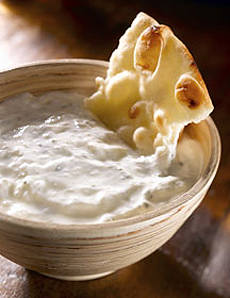A Guide To The Many Types Of Bread
Page 1: The History Of Bread Making
Jump To Glossary
If you love good bread, you’re in luck: There’s a bread renaissance in America. Artisan bakers in many cities, and the availability of good breads in gourmet markets and by mail order, mean that one no longer has to take a trip to Europe to get a good piece of bread.
The History Of Bread Making: It Started As Porridge
Bread is one of the oldest prepared foods (foods that do not grow naturally but require preparation). It dates to the Neolithic era, around 10,000 B.C.E.), when man farmed barley, einkorn wheat, emmer wheat, millet and spelt. Man had discovered that adding water to the grain—i.e., creating porridge—made it more palatable.
Further experimentation led to cooking the mixture on stones that had been heated in a fire, creating the first breads, which were flat and tortilla-like. The earliest bread-making tools date to 8,000 B.C.E. Leavening, using wild yeast to make the bread rise, came later during prehistoric times. Cooking on hot stones evolved to closed ovens made of brick or clay, around 3000 B.C.E. Fueled by charcoal, they could reach temperatures of up to 480°F. The clay oven, or tandoor, was developed in the Indus Valley (in what is modern Pakistan) about the same time.
The Egyptians Master Leavening, The Greeks Master Style
The closed oven enabled the production of different types of bread, as did the use of yeast.
The art of using yeast to leaven bread was mastered by the ancient Egyptians. Many cultures still enjoy forms of these early breads (see flatbread).
The ancient Greeks turned bread baking into an art. They invented the front-loaded bread oven and a wide variety of doughs, loaf shapes and styles of bread to pair with specific foods. Baking became a profession, and people began to buy their bread from skilled bakers.
The Romans Invent Grinding
The Romans invented the concept of grinding grain by rubbing it between two stones. Even after manual grinding was replaced by revolving grindstones driven by cattle (or slaves), grinding was a time-consuming process and leavened bread was a costly food. White bread, also invented by the Romans and made by sifting the grains through linen, was even costlier.
Ironically, given what we know about nutrition today, the poor ate dark whole-grain bread and the wealthy ate white bread, stripped of essential nutrients. This class separation by bread continued until the Industrial Revolution made the more elegant white bread available to everyone.
After you’ve boned up on bread, take a look at our many other food glossaries—an easy way to get up to speed on more than fifty different food categories.
Click on a letter to go to the appropriate glossary section:
a b c d e f g h i j k l m n o p q r s t u v w x y z
This glossary is copyright and cannot be reproduced in whole or in part.
Or, click here to go to the next page:
Bread terms beginning with A.

|




